Avian flu hits Peru, killing thousands of sea birds and infecting some marine mammals
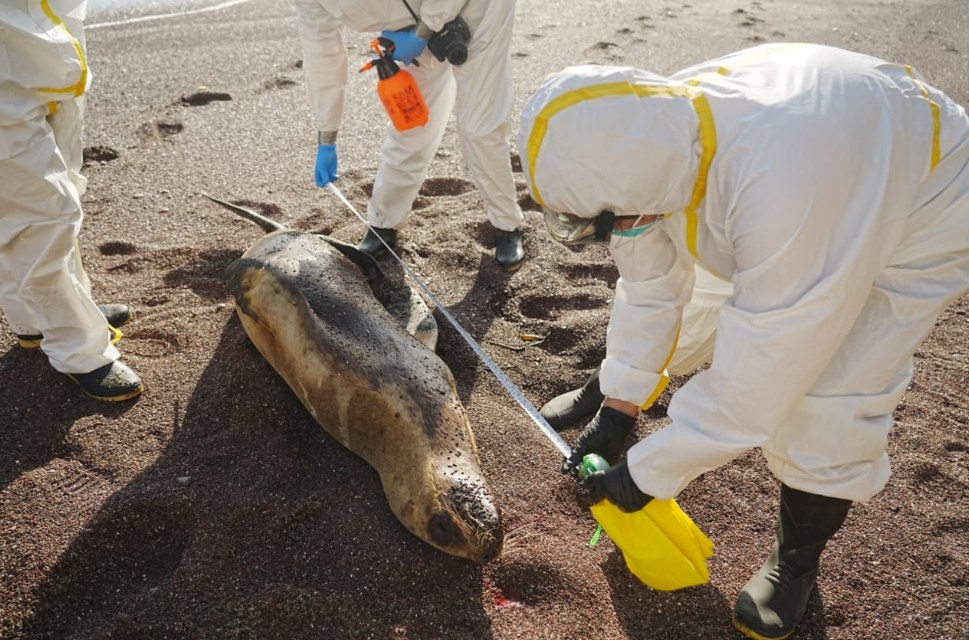
Avian flu hits Peru, killing thousands of sea birds and infecting some marine mammals
By Tim Vernimmen
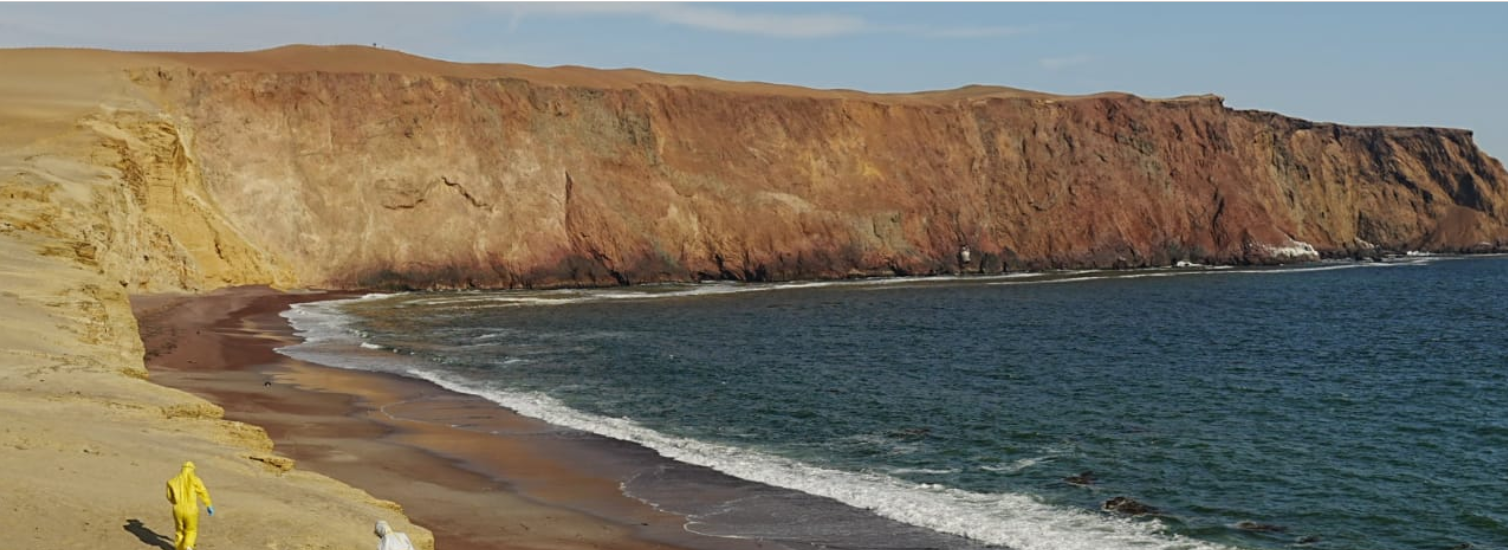
- H5N1, a highly pathogenic avian influenza virus carried generally by wild birds, has arrived in Latin America, causing unprecedented mortality in sea bird colonies along the west coast.
- The virus has killed tens of thousands of sea birds in Peru alone, including some species that are considered endangered in the country, and scientists worry other vulnerable species like the Andean condor might also become infected.
- Hundreds of sea lions and a dolphin have also been infected, which raises concerns regarding transmission to humans and is especially worrisome if it is confirmed that mammals can infect each other.
- The outbreaks also threaten Peru’s guano industry, which provides affordable fertilizer to many small-scale farmers in the region, and could expose people harvesting guano to H5N1.
Since late 2021, a highly pathogenic avian influenza virus of the type H5N1 has wreaked havoc on wild and captive birds across Asia, Africa, Europe and North America, killing millions. In November, it also arrived in Latin America, causing unprecedented mortality in sea bird colonies along the region’s west coast. “The first cases in Peru were confirmed on Nov. 13, 2022,” says Víctor Gamarra-Toledo, an ornithologist at the Universidad Nacional de San Agustín de Arequipa in Peru. “By now, outbreaks have been reported in Ecuador, Colombia, Venezuela, Chile and Central American countries like Panama and Costa Rica.” The virus continues to spread southward: earlier in February, it was found in Ancud on the Isla Grande de Chiloé in Chile, about 1,125 kilometers (700 miles) south of Santiago.
“I’ve been working with Peruvian sea birds for 30 years,” says Carlos Zavalaga, an ornithologist at the Universidad Científica del Sur in Lima, “and I’ve never seen such massive mortality due to disease outbreaks.”
The occurrence of avian influenza in Peru is not unusual in itself, says Giancarlo Inga Díaz, wildlife veterinarian at the Peruvian National Service of Natural Areas Protected by the State (SERNANP), as variants of the virus have been found in the country before. “But in 2022, we’ve observed an unusual impact on wild populations of coastal sea birds. Our wildlife monitoring system recorded nearly 50,000 dead birds in eight protected areas [in Peru alone]. In the last week of January, we’ve observed a high mortality of resident birds in the Paracas National Reserve,” Inga Díaz tells Mongabay about the reserve located 265 km (165 mi) south of Lima.
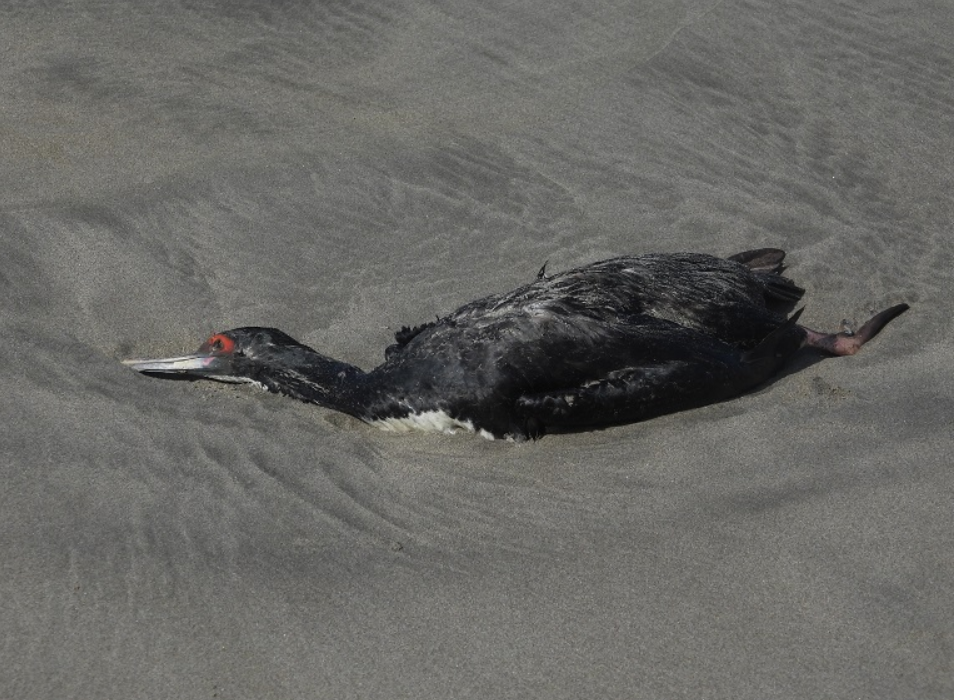
A dead Guanay cormorant (Leucocarbo bougainvilliorum) on a beach in Peru. Now confined to the Pacific coast of the continent, the species is considered to be near-threatened by the IUCN. It is one of three important species the excrements of which are harvested as guano. Image by Fernando Angulo.
Some of the heaviest impact seems to be on the islands just off Peru’s coast. “Authorities have banned researchers from entering the islands close to the coast where the main areas of mortality are,” says Zavalaga. “But about a month ago, we sent a drone with cameras from the coast to two of them, Pachacamac and Asia, and counted thousands of dead birds.” The most affected species, he says, are Peruvian pelicans (Pelecanus thagus), Peruvian boobies (Sula variegata) and Guanay cormorants (Leucocarbo bougainvilliorum). The pelicans and boobies have been designated as endangered by Peruvian authorities, while Guanay cormorants are considered to be near threatened by the IUCN. “We know that the numbers of the Peruvian pelicans in Peru never exceeded 100,000 individuals in the last 20 years,” says Zavalaga. “So the death of at least 20,000 of them is quite significant.”
The damage seems to go beyond birds. Hundreds of dead sea lions and a few dead fur seals have been discovered in several protected areas, including in Paracas National Reserve. Live sea lions there showed uncoordinated behaviors, a potential indication of infection of the nervous system, and had excessive mucus in their eyes, nose and mouth — possible symptoms of avian flu, says Inga Díaz of SERNANP.

A team of the Peruvian National Service of Natural Areas Protected by the State (SERNANP) investigating a dead South-American sea lion (Otaria flavescens) on a beach in Peru. A recent study showed that sea lions and fur seals that died were infected by avian flu, causing concerns that mammals are infecting each other. Image courtesy of SERNANP.
Still pending review, a recent analysis reveals that the sea lions had been infected by H5N1 — but whether this was also what killed them has yet to be confirmed. A dead dolphin found in the north in the region of Piura was also shown to be infected with the virus. The deadly infections increase concerns that the virus may be able to spread from one mammal to another — though that is also unconfirmed at the moment — and may be able to infect people as well.
Farmers in trouble
The outbreak affecting the pelicans, cormorants and boobies is also affecting a particular sector of the local economy: guano harvesting. The birds’ dried, compacted excrement is a prized fertilizer in agriculture. “These three species produce around 86,000 tons of guano per year, which is roughly worth $50 million,” says biologist Daniel Plazas-Jiménez, from the Unitrópico University in Colombia.
Plazas-Jiménez says the guano’s importance far exceeds its monetary value. “In Peru, most guano is sold to organic or traditional farmers, many from Indigenous communities, at a price that is low in comparison to that of inorganic fertilizers. In 2021, the Peruvian authorities planned to extract around 25,000 tons to provide for more than 40,000 families. Many people need guano to keep their organic certifications and often have few economic resources to buy other fertilizers. So this also affects their food security.”
“The guano industry in Peru is not industrial,” Zavalaga adds, “it’s very local. For example, last year only two islands in Peru were under guano harvesting. This year, I think they were planning [to harvest on] three or four [other islands].” He doubts whether the virus can survive in the harsh environment presented by the guano itself. “I’d be more afraid that live birds would pass the virus to humans, either on the islands or on the mainland beaches, where there are also dead animals. It’s summer now, so many people go there.”
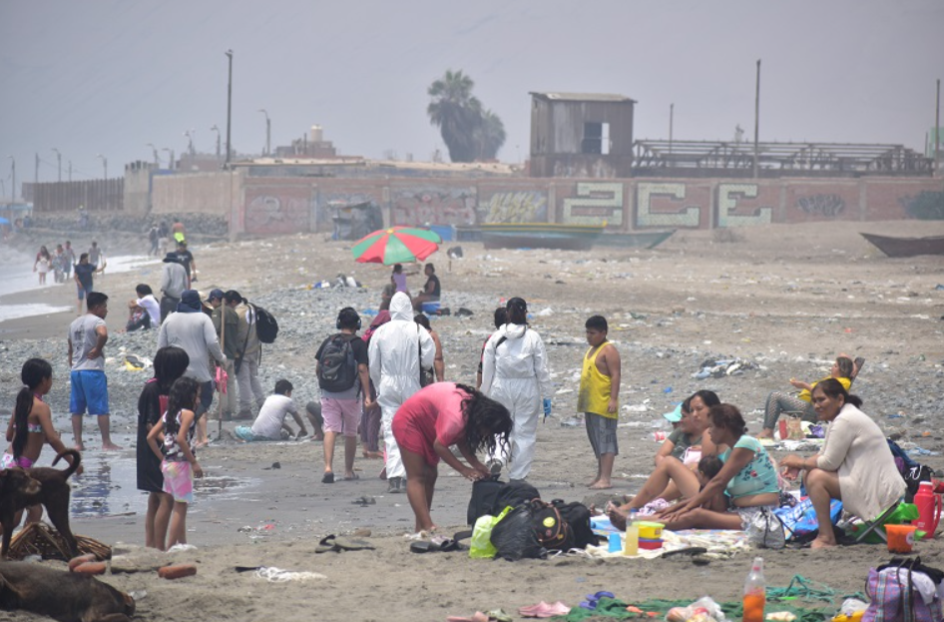
A team of the Peruvian National Service of Natural Areas Protected by the State (SERNANP) investigating a beach where dead birds have been reported. Image courtesy of SERNANP.
In response to the outbreak, the Peruvian Ministry of Health has declared a 90-day state of emergency to prevent the virus from infecting people. According to Inga Díaz, measures include banning the collection of guano, advising against handling wild animals and using high-risk beaches, and training park rangers to monitor animal health.
Condors at risk
Local governments have sent teams wearing personal protective equipment to collect the carcasses found on beaches and bury them, says Zavalaga. He worries, however, that “on the islands, where the main colonies are found, there is a lack of adequate disposal of the carcasses.” As long as few people are allowed to go there, the risk of human infection is low. But in the meantime, dead and sick birds do pose an infection risk to other birds and mammals that share their habitat, and scavengers that feed on them.
That includes a very iconic and vulnerable one, the Andean condor (Vultur gryphus), says Gamarra-Toledo, who is studying how the condor’s feeding behavior exposes it to pollution. “We are very concerned about the possible fatal consequences of this outbreak on this species.”
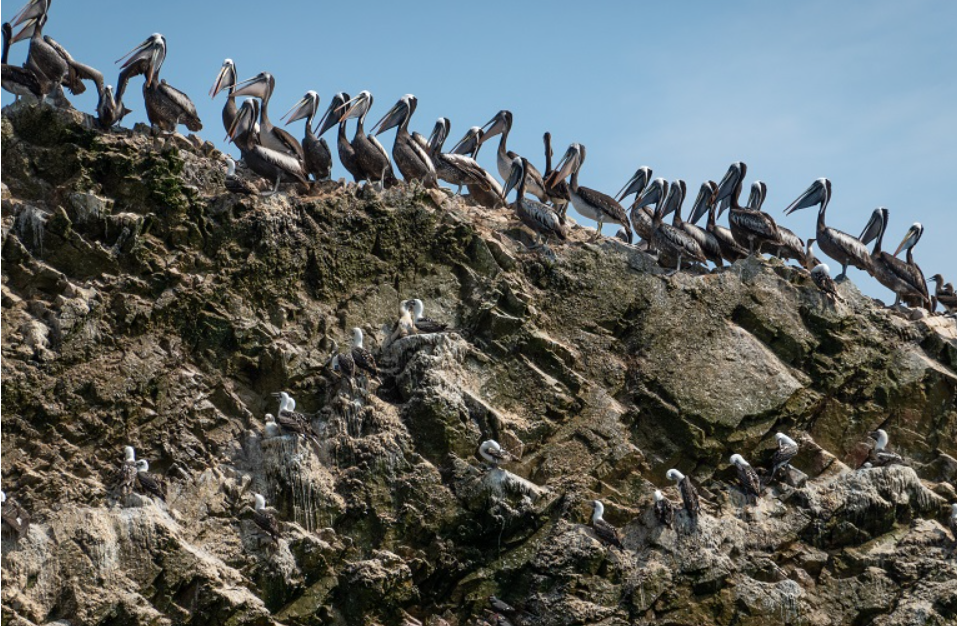
Peruvian pelicans (top) (Pelecanus thagus) and Peruvian boobies (bottom) (Sula variegata) on the Islas Ballestas, off Peru’s south coast. Both species are considered to be endangered in Peru, and thousands have died in the recent avian flu outbreaks.
“We’ve found there is a population of Andean condors feeding mainly on sea lions, but sometimes also on dead pelicans,” says Sergio Lambertucci, an ornithologist at the Universidad Nacional del Comahue in Argentina. “Andean condors may be feeding on the coastline in the morning and roosting in the high mountains in the evening, 4,000 meters [13,120 feet] above sea level.” He also worries about turkey vultures, which roam more or less across the continent and might spread the disease even if it doesn’t kill them. “We are trapping them in Argentina now to find out.”
Bird migration is probably at the root of the outbreak, says Zavalaga, as the virus appears to have arrived with birds migrating from North America in spring, though the exact routes or culprits have not been identified. “Since the first report in mid-November, the deaths have not stopped,” he adds. “Animals are still dying on the islands. What kind of conservation measures are we going to take? I don’t see anything like a strategy for that yet.”
Gamarra-Toledo agrees that monitoring outbreaks and burying dead birds may not be enough to save them. “We should also reduce human impacts that negatively affect them — environmental pollution, habitat loss and the overexploitation of resources — so we can give these birds a better chance of survival.”
